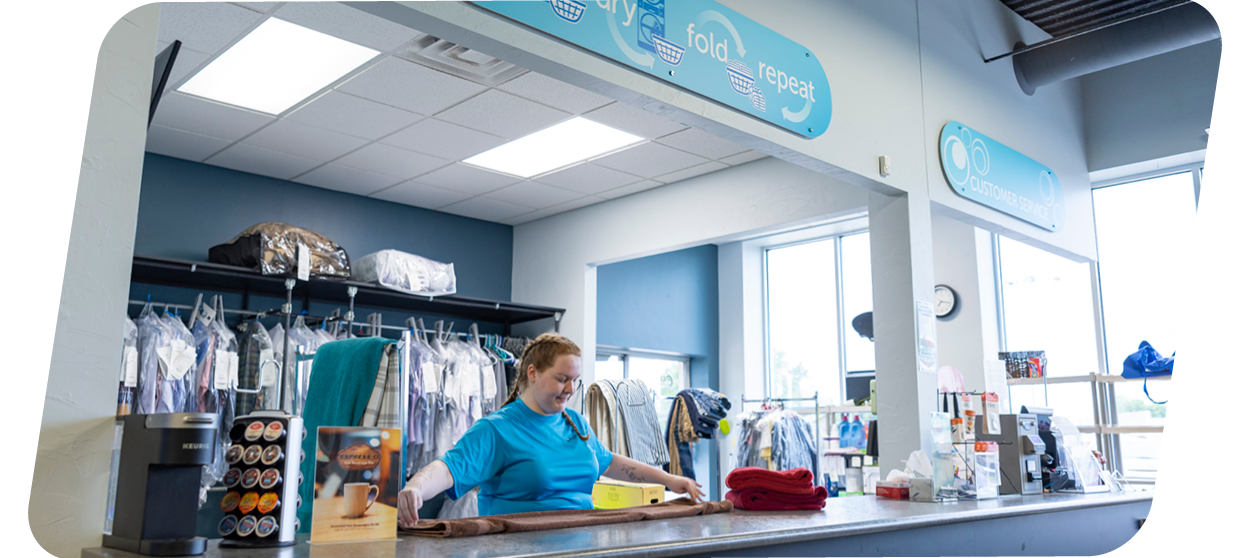Savvy laundry owners often glean revenue from multiple services, even when it means processing full-service work after hours. While growing the full-service side of business takes time, if it grows enough, it might become necessary to make key decisions about your business direction and goals.
No laundry owner wants to get in the way of self-service customers in order to process full-service work. But, if the laundry isn’t designed to accommodate the equipment, staff and storage space needed for a robust full-service business, owners will need to either process that laundry after hours or move into another space. Laundry owners often discover they can be very profitable doing more commercial turns, while maximizing revenue per square foot.
Real-Life Examples
I know several stores that process full-service work after hours, including Perfect Wash Express Laundry in Huntington Beach, Calif, and Boulder Express Laundromat, with locations in Garden Grove, Calif., and Las Vegas.
A small store, Perfect Wash organizes and stores processed orders using a conveyor system near the ceiling — above all the equipment and out of the way of customers. After hours, delivery vans pull up ready to deliver to residences and businesses. They are often the backup when small area hotels hit a snag with a downed washer while running at full capacity. Because they serve as emergency back-up, Perfect Wash can charge a premium for these services.
Similarly, the Boulder Express Las Vegas store works with area hotels, while the Garden Grove store serves vacation rentals and small hotels. Both are enjoying huge growth in this area.
Do Full-Service WDF Well First Before AddingNight Shifts
So, if you currently own a vended laundry and already process full-service work well, it might be worth considering an after-hours shift. This scenario means you can still utilize your self-service washers and dryers so long as you’ve got enough storage space for dirty and clean goods. However, if you plan to serve small businesses, including spas, salons, vacation rentals or food and beverage companies, you must use sophisticated washer programming.
Using Vended Equipment to Operate After Hours
The good news is that some vended washers can switch from basic self-service programming to the sophisticated programming necessary for removing makeup, blood, grass stains, juice, oils and sunscreens. These involve higher water temperatures, numerous bath exchanges and the automatic injection of commercial chemistry. Commercial detergents, brighteners and softeners are specially formulated to work with the water’s PH and alkalinity to better loosen and suspend soils. They’re much more effective than the residential products commonly brought into self-service laundries. Plus, only ounces of professional products are added to the washer, verses cups of residential detergents. This cuts costs and waste while increasing results.
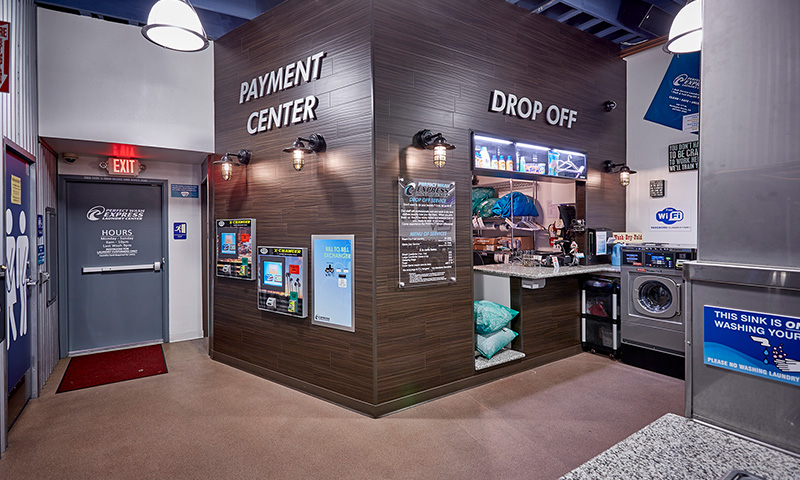
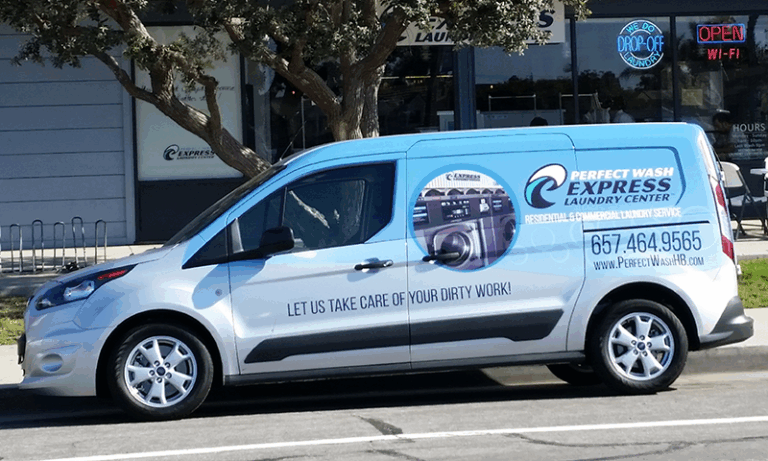
If you don’t have equipment that can switch into more sophisticated programming and automatically inject chemistry, consider removing a few self-service washers and purchasing new vended washers with this functionality or dedicated on-premise washers.
Once WDF/commercial work is processed, attendants can return the machines to self-service programming.
Making Room for Full-Service Dirty & Processed Laundry
Most laundries are short on space, so storing dirty and clean full-service goods is challenging. You might save space by immediately transferring cleaned and packaged WDF/commercial laundry to pickup and delivery vehicles. Leave them locked and loaded and ready for delivery the next day. Or store goods in an area away from customers, like Perfect Wash Express Laundry Center does with its above-it-all conveyor system. Still other laundries store goods in an office or back room with ample shelving.
Go Big with a Flatwork Ironer
There’s no better way to improve revenue and handle bigger accounts than by adding a flatwork ironer. I know many owners who’ve done this and launched WDF/commercial account sales as a result. An ironer will help you serve hospitality and residential clients who demand ironed sheets and table linens, and in the process, you’ll get their towel and blanket business too.
A flatwork ironer, which requires about a 200-square-foot space and two operators, dries, irons and partially folds approximately 2 sheets per minute, depending on the model. If you’re at this stage of the game and are committed to operating out of your vended laundry, you’ll likely need to remove some washers/dryers or rework a room in order to make space for the ironer.
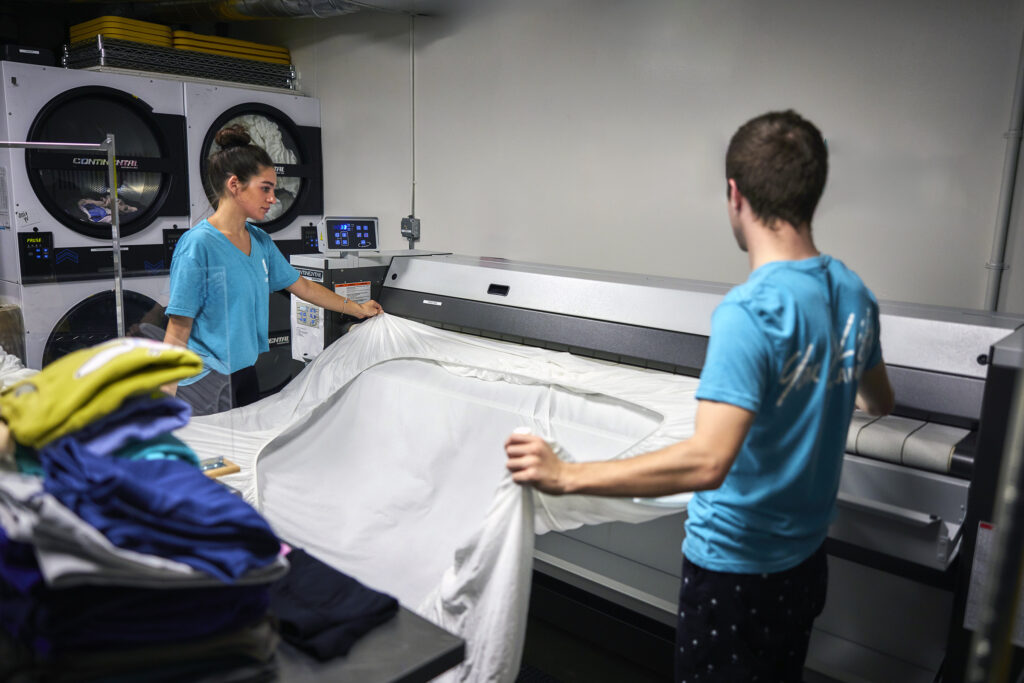
Sparklean Laundry, near Palm Springs, Calif., eliminated a second bathroom, removed two stack dryers and relocated a wall to accommodate their ironer, which was installed in the middle of the laundry surrounded by floor-to-ceiling glass. It not only dries, irons and partially folds tablecloths up to 10 feet in diameter, king sheets, king duvets, pillowcases and napkins, it single-handedly opened the doors to new business. As a result of this surge, Sparklean Laundry added a third shift to process its 8,000 pounds of commercial and residential WDF per week.
Leasing/Buying a Second Building or Adding On
But not every laundry can be easily altered to add an ironer. If this is the case, chances are good you’ll need a separate dedicated space for the ironer and processing and storing full-service work. Ideally, it’s nice to lease or buy a building next to or near your vended laundry — reducing your need to purchase new washers and dryers. Another idea is to add on to the back of your laundry. And finally, there are many owners who opt for a completely separate processing space dedicated to residential and commercial WDF. Whichever you choose, get your laundry solutions distributor involved early on to help you with site selection, design, layout, equipment mix and automation options.
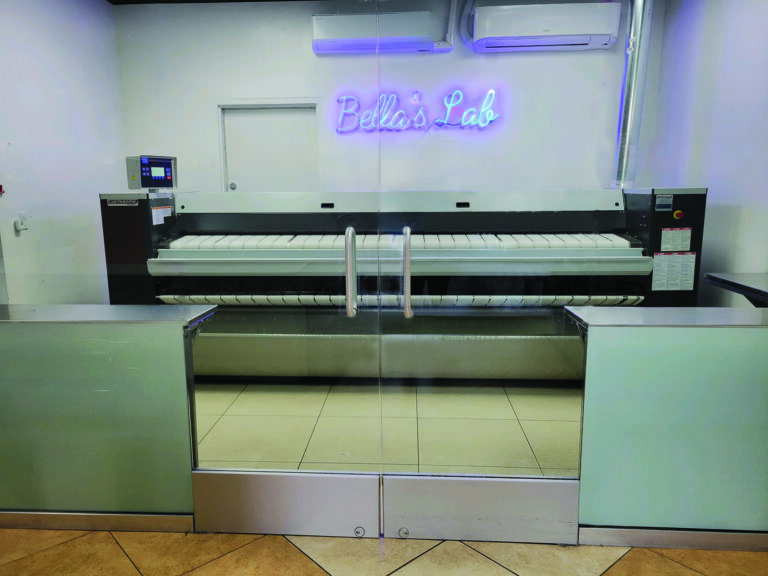
Track the Orders with a POS
And, if you’re committed to growth, it’s a must to track and manage full-service orders using a point-of-sale (POS) system. Your POS should automatically email order status updates to customers, keeping them constantly in the loop. A good POS simplifies accounting, management, pickup and delivery and so much more …
There’s no doubt, if you are committed to residential and commercial WDF growth, a little creativity goes a long way. A great place to start is with your laundry solutions distributor or a Coin Laundry Association (CLA) WDF seminar. They are held regularly across the U.S.
About the Author

Tod Sorensen is a regional business manager at Girbau North America and vice president of Continental Girbau West, a full-service distributorship serving the Southern California vended, on-premise and industrial laundry markets. He holds more than 20 years of experience in vended laundry development and market analysis. Please contact him with any questions at tsorensen@gnalaundry.com or call 866-950-2449.

